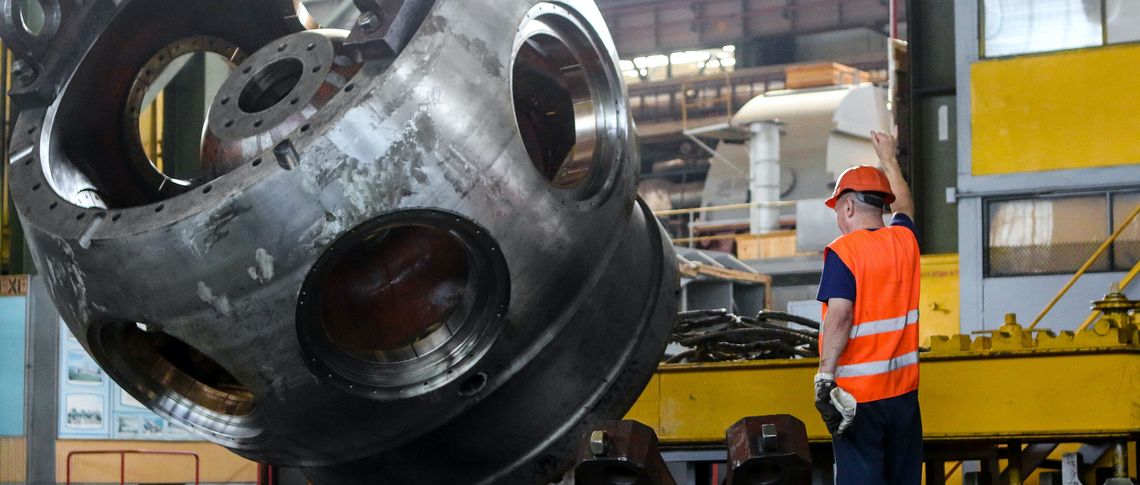The Russian invasion of Ukraine has not only created a humanitarian crisis but led to extensive economic impacts. Ukraine’s economy is in disarray as the supply chains providing food, textiles, and other goods, along with the equipment and materials that support the country’s industrial and agricultural sectors, are either stressed or broken.
At the same time, Western sanctions are also significantly impacting the Russian economy. Over 750 firms — mainly North American and European — have suspended or stopped operations in Russia. The Ruble has lost significant value, and economists expect a 25 per cent to 30 per cent decline in economic activity adjusted for inflation this year. Although Russia and Ukraine only accounted for about 4 per cent of global GDP in 2021, the inter-connectedness of the global supply chains has caused this conflict to have rippling effects on industrial supply chains.
Bringing semiconductors to Europe
Nowhere is this more illustrative than in semiconductors or ‘chips’, an essential component in electronic devices that enable everything from iPhones to cars and future applications like artificial intelligence and quantum computing. Unanticipated rising demand for chips during the pandemic, lockdowns, disruptions due to recent fires in fabricating plants, and extreme weather events like the cold snap in Texas, have strained the chip supply chain and has created a worldwide shortage for chips.
The Ukraine conflict has the potential to deepen this crisis further. Ukrainian companies, Ingas and Cryoin, account for about half the world’s neon production, which is critical for lasers used in chipmaking. Both Ingas, based in the beleaguered town of Mariupol, and Cryoin, based in the port town of Odesa, have shuttered operations due to the conflict.
China’s reluctance to sanction Russia on top of the already tense relationship between the US and China poses a significant geopolitical risk to the chip supply chain.
Russia produces about a third of the global palladium supply, a rare metal used in sensor chips and certain types of computer memory. The conflict has restricted supply lines for neon and palladium, pushing up prices, which could translate into higher chip prices. Crisis-hardened firms have been building inventory in anticipation of the conflict. Still, if the conflict drags on for more than several months, they are sure to scramble for alternate and more reliable sources for these raw materials.
Another cause for concern is that three-quarters of the world’s production capacity of chips are concentrated in East Asia, with China and Taiwan projected to have the world’s largest share in production by 2030. China’s reluctance to sanction Russia on top of the already tense relationship between the US and China poses a significant geopolitical risk to the chip supply chain. The pandemic has already triggered a debate in both the US and Europe — on moving away from globalisation to local sourcing for chips (and indeed many other industries such as rare earth metals and medical supplies) to increase resiliency in supply chains.
The US passed the CHIPS Act in 2021, which promises to build chip foundries in the US. The European Chips Act promises investments in Europe to increase its global capacity share from 9 per cent to 20 per cent. These solutions do not address the short-term shortages, with any added capacity going online no earlier than 2026.
Stalling the automotive industry
Ukraine also has a thriving cars-parts industry. It is a supplier of wiring harnesses — a critical component in automotive electrical systems. War-related production stoppages of this component have had a cascading effect throughout automotive supply chains. They are testing long-held efficiency measures like just-in-time (JIT) production systems that rely on getting parts delivered directly to the manufacturing floor as needed.
Under JIT systems, supply shortages and transportation disruptions can quickly stop production lines at tier 1 suppliers. For instance, production at Leoni AG and Japan’s Fujikura Ltd was stopped, directly impacting European car manufacturers. Volkswagen (VW) stopped production in its Zwickau plant in Germany, which makes ID.4 electric vehicles for both the European and American markets. VW’s plant in Wolfsburg also faces disruptions due to a lack of parts. BMW's Dingolfing plant, where their sedans are built, will also be idled due to missing parts.
The conflict has also disrupted the China-Europe rail link that uses the corridor through Russia and Central Asia to carry automotive parts and finished cars. Alternate supply sources and transport routes take time to scale up to required levels in production. The semiconductor shortage is already crippling the automotive industry — the added disruption due to the war in Ukraine will lower global output by 1.5 million units.
Russia is the 2nd largest producer of Cobalt and the 3rd most significant supplier of Nickel, responsible for 4 per cent and 7 per cent of the global supply.
Lithium, nickel, and cobalt are metals used in electric vehicle (EV) batteries. Ukraine’s Donbas region possesses abundant lithium reserves, and prospecting and mining operations have stalled in the area. Russia is the 2nd largest producer of Cobalt and the 3rd most significant supplier of Nickel, responsible for 4 per cent and 7 per cent of the global supply, respectively.
A protracted war is likely to accelerate attempts by the US and Europe to develop domestic supplies of these metals (and other commodities) that often come from Russia. For example, Canada, the US, and Greenland have deposits of these essential metals used in EV batteries, but financing and setting up mining operations could take many years. Meanwhile, companies must contend with lowered supply and high prices, slowing the transition from gas to electric vehicles.
Supply chain politics
The conflict in Ukraine highlights the complex, global, and interconnected nature of contemporary supply chains. As the chip and automotive supply chain show, a disruption in one part of the World can significantly impact operations globally. There are no easy answers to adapt to these disruptions either.
Building regional supply chains take money, time, and human talent. Like Europe’s dependence on Russian gas or US supply chains that are tightly wound with China, supply chain relationships are hard to extricate from. Perhaps the conflict will push supply chain relationships between countries with like-minded values — but who is to say a country that shares common values today may not turn hostile in the future?
Two levels of decision-making are needed to mitigate the impact of supply chain disruptions. First, governments and industries should adopt policies that increase the resilience of critical supply chains. This includes stress testing supply chains and investing in infrastructure and ecosystems that support the local development and manufacture of key materials and components. Second, producers should adopt risk mitigation tactics. This may include identifying multiple suppliers for key components, increasing safety stocks, and bringing critical suppliers into closer proximity.







